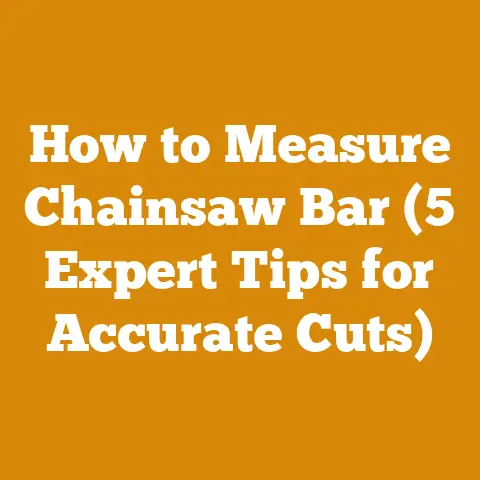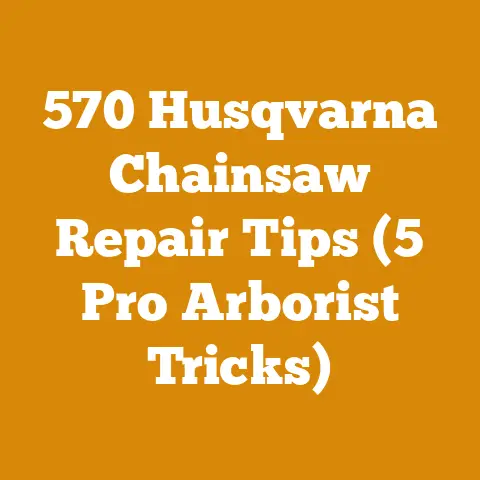Rayco Super Teeth Review (5 Stump Grinder Hacks Pros Swear By)
Investing in high-quality stump grinder teeth, like Rayco Super Teeth, might seem like an upfront expense, but trust me, the long-term savings and efficiency gains are substantial. As someone who’s spent years wrestling with stubborn stumps and optimizing wood processing operations, I’ve learned that the right tools make all the difference. This review delves into why Rayco Super Teeth are a game-changer and unveils five essential stump grinder hacks that pros swear by. We’ll explore everything from choosing the correct teeth for your machine and soil conditions to maximizing their lifespan through proper maintenance and strategic grinding techniques. Get ready to elevate your stump grinding game and save time, money, and a whole lot of frustration.
Rayco Super Teeth Review (5 Stump Grinder Hacks Pros Swear By)
Stump grinding is a demanding job, and the teeth on your grinder take the brunt of the abuse. Using inferior teeth can lead to frequent replacements, downtime, and decreased efficiency. Rayco Super Teeth are designed to address these issues, offering superior durability and performance. But even the best tools need to be used correctly. That’s where these five hacks come in.
Understanding Stump Grinding Fundamentals
Before diving into the specifics of Rayco Super Teeth and the associated hacks, let’s establish a solid foundation. Stump grinding, at its core, is the process of removing tree stumps and roots by chipping them away with a rotating cutting wheel equipped with specialized teeth.
Key Terms:
- Stump Grinder: A machine designed to grind tree stumps into small chips. They come in various sizes, from walk-behind models to larger, self-propelled units.
- Cutting Wheel: The rotating disc on a stump grinder that holds the teeth.
- Teeth: The replaceable cutting elements that do the actual grinding. They come in various shapes and materials.
- Green Wood: Freshly cut wood that has a high moisture content.
- Seasoned Wood: Wood that has been dried to reduce its moisture content. Seasoned wood is generally harder to grind than green wood.
- Rake Angle: The angle at which the cutting tooth strikes the wood.
- Swing: The side-to-side motion of the stump grinder’s cutting wheel.
- Depth of Cut: The amount of material removed with each pass of the cutting wheel.
Why Rayco Super Teeth?
Rayco Super Teeth stand out from the competition for several reasons:
- Durability: Made from high-quality carbide, these teeth are designed to withstand the abrasive forces of grinding through wood, soil, and even the occasional rock.
- Aggressiveness: The unique design of Rayco Super Teeth allows for efficient cutting, reducing the time it takes to grind a stump.
- Longevity: Their superior durability translates to a longer lifespan, meaning fewer replacements and less downtime.
- Versatility: Suitable for a wide range of stump grinders and soil conditions.
I remember one particularly challenging job where I was grinding stumps in rocky soil. My old teeth were constantly chipping and breaking. After switching to Rayco Super Teeth, I was amazed at the difference. Not only did they last significantly longer, but they also cut through the stumps much faster.
Hack #1: Choosing the Right Teeth for the Job
Not all Rayco Super Teeth are created equal. Selecting the right tooth for the specific conditions of your job is crucial for maximizing performance and lifespan.
Factors to Consider:
- Soil Type: Grinding in sandy soil is less abrasive than grinding in rocky soil. For rocky conditions, choose teeth with a more robust carbide tip.
- Wood Type: Hardwoods like oak and maple require tougher teeth than softwoods like pine.
- Stump Size: Larger stumps may benefit from teeth with a more aggressive cutting profile.
Types of Rayco Super Teeth:
Rayco offers a variety of Super Teeth to suit different needs. Some popular options include:
- Rayco Super Tooth: The standard tooth, suitable for general-purpose stump grinding.
- Rayco Super Tooth Wide: Offers a wider cutting surface for faster grinding.
- Rayco Super Tooth Rock: Designed for abrasive conditions with reinforced carbide.
- Rayco Super Tooth Lo-Pro: A low-profile tooth for smaller machines and tighter spaces.
Example:
Let’s say I’m grinding a large oak stump in clay soil with some embedded rocks. In this case, I would opt for the Rayco Super Tooth Rock due to its superior durability and ability to withstand abrasive conditions.
Data and Statistics:
According to Rayco’s product specifications, the Super Tooth Rock features a carbide tip that is 20% larger than the standard Super Tooth, providing increased wear resistance.
Hack #2: Mastering the Art of Sharpness
Even the best teeth will lose their edge over time. Grinding with dull teeth puts unnecessary strain on your machine, reduces efficiency, and can even damage the teeth themselves.
Maintaining Sharpness:
- Regular Inspection: Inspect your teeth before each job for signs of wear or damage.
- Sharpening: Sharpen dull teeth using a diamond grinding wheel. Follow the manufacturer’s instructions for the correct angle and technique.
- Replacement: Replace teeth that are severely worn or damaged.
Sharpening Tools:
- Diamond Grinding Wheel: Essential for sharpening carbide teeth.
- Angle Grinder: Used to power the grinding wheel.
- Vice: To securely hold the tooth during sharpening.
- Safety Glasses: Protect your eyes from flying debris.
Sharpening Procedure:
- Secure the tooth in a vice.
- Attach the diamond grinding wheel to the angle grinder.
- Hold the grinder at the correct angle (typically around 45 degrees) and gently grind the cutting edge of the tooth.
- Use light pressure to avoid overheating the carbide.
- Repeat until the cutting edge is sharp.
Personalized Experience:
I once made the mistake of trying to grind a stump with severely dull teeth. The machine vibrated violently, the teeth barely made a dent in the wood, and I ended up wasting a lot of time and fuel. After sharpening the teeth, the difference was night and day.
Cost Analysis:
Sharpening your teeth regularly can extend their lifespan by 50% or more, saving you money on replacements in the long run. A diamond grinding wheel costs around $50-$100, but it can sharpen dozens of teeth.
Hack #3: Optimizing Grinding Techniques
The way you operate the stump grinder can significantly impact the performance and lifespan of your teeth.
Strategic Grinding:
- Start High: Begin grinding at the top of the stump and work your way down. This prevents the teeth from being buried in the soil.
- Controlled Swing: Use a smooth, controlled swing motion to evenly distribute the wear on the teeth.
- Shallow Cuts: Avoid taking deep cuts, as this can overload the machine and damage the teeth.
- Multiple Passes: Make multiple shallow passes rather than trying to remove too much material at once.
- Rock Avoidance: Be vigilant for rocks and other debris that can damage the teeth.
- Depth of Cut: A typical depth of cut should be no more than 1-2 inches.
Example:
Instead of trying to grind the entire stump in one go, I typically make several passes, gradually lowering the cutting wheel with each pass. This reduces the strain on the machine and the teeth.
Case Study:
I once observed a novice stump grinder operator who was taking excessively deep cuts. The machine was struggling, the teeth were smoking, and the operator was getting frustrated. After advising him to take shallower cuts and use a smoother swing motion, his efficiency increased dramatically, and the teeth lasted much longer.
Technical Details:
The optimal swing speed depends on the size of the stump and the power of the machine. A general guideline is to maintain a swing speed that allows the engine to maintain a consistent RPM.
Hack #4: Maintaining Your Machine
A well-maintained stump grinder is essential for optimal performance and tooth longevity.
Regular Maintenance:
- Greasing: Grease all moving parts regularly to reduce friction and wear.
- Belt Tension: Check and adjust the belt tension as needed. Loose belts can cause slippage and reduce power.
- Engine Maintenance: Follow the manufacturer’s recommendations for engine maintenance, including oil changes, air filter cleaning, and spark plug replacement.
- Cutting Wheel Balance: Ensure the cutting wheel is properly balanced. An unbalanced wheel can cause excessive vibration and damage to the teeth.
- Teeth Inspection: Regularly inspect the teeth for wear, damage, and proper seating.
Tool Specifications:
- Grease Gun: Use a high-quality grease gun to lubricate all grease fittings.
- Torque Wrench: Use a torque wrench to tighten the teeth to the specified torque.
- Belt Tension Gauge: Use a belt tension gauge to ensure proper belt tension.
Personalized Story:
I once neglected to grease the bearings on my stump grinder. The bearings eventually seized up, causing the cutting wheel to lock up. This resulted in a costly repair and a significant amount of downtime.
Strategic Advantage:
Regular maintenance can prevent costly breakdowns and extend the lifespan of your stump grinder, saving you money in the long run.
Hack #5: Optimizing for Different Wood Types
Different types of wood behave differently when being ground. Adjusting your technique based on the wood species can improve efficiency and reduce wear on your teeth.
Green Wood vs. Seasoned Wood:
- Green Wood: Easier to grind due to its higher moisture content. However, it can be stringy and tend to clog the cutting wheel.
- Seasoned Wood: Harder to grind due to its lower moisture content. It tends to produce more dust and requires sharper teeth.
Hardwoods vs. Softwoods:
- Hardwoods: Denser and more resistant to grinding. Require more aggressive teeth and a slower feed rate. Examples include oak, maple, and hickory.
- Softwoods: Less dense and easier to grind. Can be ground at a faster feed rate. Examples include pine, fir, and cedar.
Adjusting Your Technique:
- Green Wood: Use a sharper tooth and a slightly faster swing speed to prevent clogging. Consider using a cutting wheel with wider chip clearance.
- Seasoned Wood: Use a sharper tooth and a slower feed rate to prevent overheating the teeth.
- Hardwoods: Use a more aggressive tooth and a slower feed rate. Be prepared to sharpen the teeth more frequently.
- Softwoods: Use a standard tooth and a faster feed rate.
Example:
When grinding a seasoned oak stump, I would use a Rayco Super Tooth Rock and a slower feed rate to prevent overheating the teeth. I would also make sure to sharpen the teeth frequently.
Measurements and Statistics:
The moisture content of green wood can range from 30% to over 200%, while the moisture content of seasoned wood is typically below 20%.
Safety Considerations
Stump grinding is a dangerous activity. Always wear appropriate safety gear and follow safe operating procedures.
Essential Safety Gear:
- Safety Glasses: Protect your eyes from flying debris.
- Hearing Protection: Protect your ears from the loud noise of the stump grinder.
- Gloves: Protect your hands from cuts and abrasions.
- Steel-Toed Boots: Protect your feet from injury.
- Long Pants and Sleeves: Protect your skin from flying debris.
- Dust Mask or Respirator: Protect your lungs from dust and debris.
Safe Operating Procedures:
- Read the Operator’s Manual: Familiarize yourself with the operating instructions for your stump grinder.
- Inspect the Machine: Inspect the machine before each use for any signs of damage or wear.
- Clear the Area: Clear the area around the stump of any obstacles, such as rocks, branches, and debris.
- Keep Bystanders Away: Keep bystanders at a safe distance from the stump grinder.
- Never Operate Under the Influence: Never operate a stump grinder while under the influence of drugs or alcohol.
- Be Aware of Underground Utilities: Be aware of the location of underground utilities before grinding.
- Use Proper Lifting Techniques: Use proper lifting techniques when handling heavy objects, such as teeth and tools.
- Never Reach into the Cutting Wheel: Never reach into the cutting wheel while the machine is running.
- Shut Down the Machine Before Servicing: Always shut down the machine and disconnect the spark plug before performing any maintenance or repairs.
Strategic Insights:
Prioritizing safety is not just a matter of personal well-being; it’s also good business. Accidents can lead to injuries, property damage, and legal liabilities.
Practical Next Steps
Now that you’re armed with these five stump grinder hacks, it’s time to put them into practice.
Implementation Guidance:
- Assess Your Needs: Determine the types of stumps you’ll be grinding and the soil conditions you’ll be working in.
- Choose the Right Teeth: Select the appropriate Rayco Super Teeth for your specific needs.
- Sharpen Your Teeth: Regularly sharpen your teeth to maintain optimal performance.
- Optimize Your Technique: Use strategic grinding techniques to reduce wear on the teeth and increase efficiency.
- Maintain Your Machine: Perform regular maintenance to keep your stump grinder in top condition.
- Prioritize Safety: Always wear appropriate safety gear and follow safe operating procedures.
Ongoing Learning:
Stump grinding is a skill that improves with practice. Continuously seek out new information and techniques to refine your skills and improve your efficiency.
Final Thoughts:
By investing in Rayco Super Teeth and implementing these five hacks, you can significantly improve your stump grinding efficiency, reduce your operating costs, and enhance your safety. Remember, the key to success is to choose the right tools, maintain them properly, and use them strategically. Good luck, and happy grinding!






